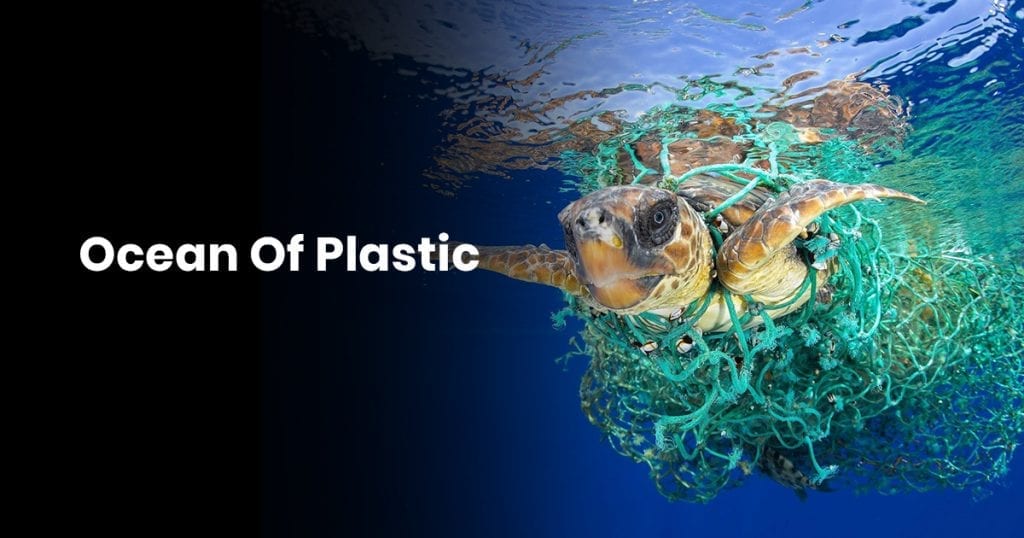Do you know how much plastic is in the ocean? It’s impossible to know, because it’s constantly growing and incredibly difficult to track.
It is estimated that there are over 18 billion pounds of plastic dumped into the ocean every single year, or more than 49 million pounds every 24 hours.
Plastic is becoming a growing concern among marine life, causing death death, and a negative impact on global food production that costs billions of dollars per year.
The massive effects of plastic pollution in the ocean is finally being realized by the big companies that caused some of these problems in the first place, but that isn’t enough to reverse all the damage.
As they say, if every man would sweep his own doorstep, the city would soon be clean.
Contents
- 1 Ocean Plastic Pollution
- 2 Projection for Our Future
- 3 How US Citizens Add up to the Pollution of Our Oceans
- 4 What Are Plastic Items That Are Most Often Found in Oceans?
- 5 How Are Reusable Items Helpful for the Environment?
- 6 How Exactly Does Plastic Affect Marine Biolife?
- 7 What is TheOceanCleanUp?
- 8 What is the Great Pacific Garbage Patch?
- 9 How Can We Help With Cleanup of Our Oceans?
Ocean Plastic Pollution

Let’s discuss all the contributing factors that make up this global epidemic of plastic waste in the ocean, and explore multiple options to fix things on a local scale.
Reasons for Pollution
Boy, where do we start?
Some people go extreme and say that humanity is a virus on earth, that we’re a plague, that we’re a blight.
That simply isn’t true, but it doesn’t excuse our actions. We’ve been treating our big green home like a dumpster for far too long, mainly because it’s been so easy to do so.
We have a big barrel on the side of the road that we fill with things that we don’t want, we don’t need, or are dirty, and then they’re taken away for us.
You don’t even need to be home, you just expect the trash to be picked up a certain time once or twice a week. It takes “Out of sight, out of mind” to an entirely new level.
Pollution serves a purpose, or at least it did at one time when there weren’t as many of us. It kept our civilization clean, functioning, and well, civil.
The problem is, we didn’t care what happened with the waste. We made new products and materials in the last century that accelerate the deterioration and damage of the environment, and nobody batted an eye.
Now we’re in a state where there’s a lot of damage and we’re seeing the effects, and in the last ten or twenty years, people have woken up to it.
We originally dumped in landfills, but after a while, that stopped becoming an option.
It harmed nearly farmland, created horrible odors that would travel for miles, and made things unsightly. That’s when we started dumping it in the ocean in garbage patches, but guess what?
Turns out that wasn’t such a sound idea, because now there’s literally trillions of pieces of plastic floating in the ocean, washing up on the shores of islands and countries on the southern hemisphere (the impact is everywhere, but ocean currents tend to favor these areas).
Pollution was how we kept our lives clean and clear, but it’s now how things should continue.
It’s time for renewable energy and safe waste habits, which will help to stall the damage we’re doing so we can undo the damage we’ve already done..
The causes of pollution range from multiple sources, including:
- Boating: Boating and maritime transportation in general has its own issues, such as displacing proper algae production in certain areas by moving sediment deposits around. In highly trafficked areas, this is a growing concern. Cleaning chemicals on boats, waxes, sealants, and a volley of other chemicals are all adding to ocean pollution as well. There’s more fishing vessels in the ocean than ever before (approximately 3.7 million as of May 2019), and more pollutants that are leaking into the ocean. The problem is, there’s currently no better alternative to most of the issues associated with or directly tied to boating pollution.
- Ocean Mining: Ocean mining doesn’t always have to be about oil. Ocean mining can refer to REE mining, which stands for rare earth elements. Since we can’t explore the depths of the ocean completely, we don’t know how extracting these minerals and rare earth elements affect deep marine life. We can only assume that it isn’t good. Ocean mining produces a lot of direct pollution to the water, which is when it doesn’t pass from a smaller source and converge into a larger one, such as sewage waste. It’s like if your toilet had one line that went twenty feet from your home, and directly into the ocean.
- Littering: This is a major focus, because it is truly avoidable. Others like human waste dumping and oil are preventable, but are more out-of-reach for the average person. Littering isn’t just related to dropping a piece of trash on the side of the beach, it’s when garbage patches in the ocean get out of control, or landfills spill over into the ocean, resulting in massive amounts of plastic everywhere. It’s estimated that there are five trillion pieces of plastic in the ocean, and those numbers are growing. We’ll talk more about the dangerous effects of plastic on nature in a little while.
- Sewage Spilling: Sewage is a big problem, since it’s filled with pathogens, bacteria, and other de-oxygenating properties that literally kill habitats in the water. When the oxygen goes away, or rather, is strangled out of the water, fish can’t swim through it. If they do, they die. If they don’t, they go to areas of the ocean that they don’t otherwise travel, which messes up the balance of our biodiverse world.
- Oil Spills: Everyone thinks of the BP spill straight away, but there are literally thousands of oil spills that occur every single year. Some of them are deemed as small, but with current technological advancements in clean, renewable energy, we shouldn’t be having these problems at all. There is still an oil spill that’s affecting the oceans that began in 1969—it’s a big deal, and it has to stop.
Scale of Pollution
Pollution on land can be stacked or buried, and while that’s not the best option, it can at least be contained.
You can’t really stack anything in the ocean, and even if you could, it’s just going to roll with the waves and even itself out. For that reasons, pollution in the ocean doesn’t require as much waste to be have as devastating of an impact.
To get a grip on the problem, there are 14 billion pounds of garbage that are introduced into the ocean every single year. If you want to break that down, that’s 1.5 million pounds of garbage and waste every 60 minutes, or about 417 pounds per second.
That’s massive, and despite the oceans making up most of the planet, they’re actually suffering the biggest impact. It’s affecting their ability to breathe.
Pollution Effects on Biodiversity
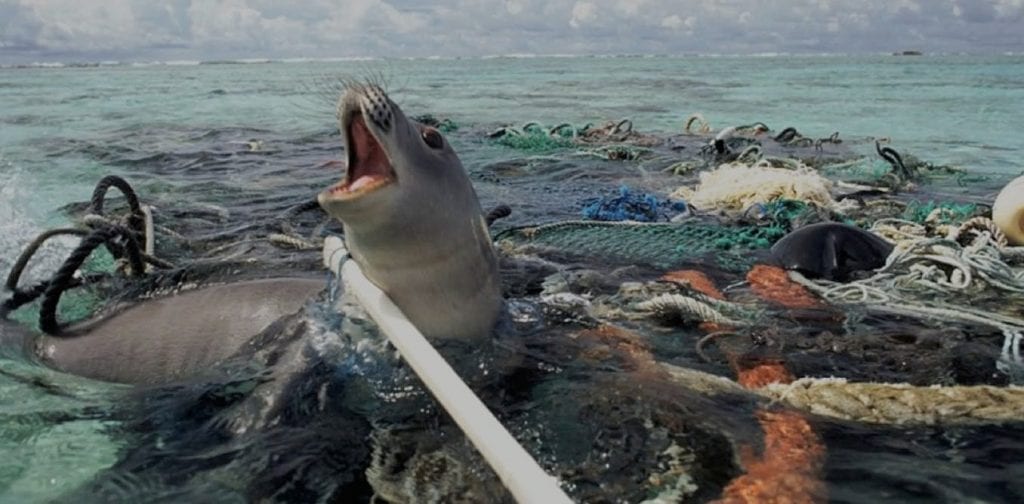
Biodiversity is the best way to describe a balance, or a natural order to the world.
Biological changes in the earth, when not affected by human intervention, follow a certain rhythm or have a certain response.
While this might sound like an inflated statement, nature is perfect, because everything we’ve introduced to the world has some form of consequence.
If a species of animal dies out naturally, then it dies out naturally as the evolution of the world dictates. If an earthquake occurs, there may be destruction that follows, but it doesn’t upset the balance.
However, when you introduce pollution—things that we create—into the environment, we immediately disrupt the biodiversity.
Ocean pollution is the biggest threat to a naturally sustained biodiversity. There’s a side of habitat loss from deforestation, landfill waste, development and others, but today we’re focusing on the ocean elements.
By the biodegradable definition the sunscreen should leave no harmful toxins behind once it’s left our body. But here’s the thing:
There are many forms of pollution included in non-biodegradable sunscreen, which contributes heavily to the destruction of our coral reefs, as well as non-treated sewage that de-oxygenates the water.
Both of these contribute to dead zones, which are patches of water where there’s absolutely no oxygen, or level that are low enough that marine life cannot sustain themselves.
Coral reefs are essential for fish and marine life for multiple reasons, and their DNA is being altered.
They take decades to gradually build and repair themselves, but when that DNA is altered, it can take far longer, and with fewer results.
When the fish don’t congregate in the same areas, they don’t go near the same shores, and land life doesn’t prey on fish.
From there, the land life has to find other sources of food, which could cause them to go outside of their normal hunting range. Then you’re endangering other species who aren’t used to dealing with these new predators on their land.
One of the biggest fish populations that has been impacted is salmon, which feeds over 130 different animal species as a primary dietary staple in the pacific alone.
Don’t worry, we’re getting back to plastic and how this all ties in.
When the fish escape dying coral reefs and dead zones in the ocean, they’re often met with highly polluted areas where plastic floats through the water and rests on top of it.
These fish might come to these areas that would have been ripe with algae, but all that plastic floating on the water greatly diminishes algae’s ability to spawn and reproduce in almost any body of water.
Algae is fascinating not only because it’s a primary component of a lot of sea life’s diets, but it is roughly 95% made out of sunlight alone.
It’s ridiculously easy to make, which only makes its difficulty to grow in our current marine ecosystem absolutely horrifying.
If one of the most simplistic parts of the marine food chain can’t produce properly, what are the fish going to eat? It’s a domino effect that targets every systematic and fundamental building block of ocean life.
Projection for Our Future
If someone told you that 71% of your body wasn’t exactly in the best of health, would that be enough to make you concerned?
The oceans take up that percentage of the earth, and if you think that pollution isn’t affecting every single part of it, you would be wrong.
The fact of the matter is that when one major problem occurs, like multiple dead zones and a massive die-off of algae, it has a ripple effect across oceans.
One issue causes another, and soon you’re overrun. There’s a lot of scientific literature regarding rising sea levels, which are among one of the most prominent concerns to humans living in coastal cities.
If we don’t alter our course for the future, it isn’t just rising sea levels from climate change that is going to affect us—the temperature of the earth is hiking, sending the more dominant sea life to different parts of the world.
We’re seeing schools of sharks in areas that they otherwise would never go, and that means they’re leaving the ecosystem that they’ve been a part of for hundreds, if not thousands of years. The earth will naturally change, but we’re speeding up that change on 100x speed.
Oceans also trap most of the heat that we receive from the thick mess of carbon in the atmosphere and the sun’s rays.
If we were a rock planet with no oceans, there would be nothing to absorb that heat, and we’d fry. As ocean temperatures rise, it becomes less habitable for an increasingly large list of marine life, and that’s not helping.
For our future, the plastic pollution problem is set to increase threefold in the next six years. At the time of writing this article, that’s just under six years.
Fish populations are at an all-time low, while fishing vessels are at an all-time high. It looks grim, but it doesn’t have to be.
The future of our oceans can be a bright one. We created this problem, and we can certainly reverse it, if we start taking drastic measures.
We have ocean cleanup companies, some of which we will talk about in this article, which are helping to paint a bright future, as well as world powers and their governments waking up to the very real threat.
The issue with moving forward is that there are so many sectors of pollution that it’s hard to put your focus on just one, and handle that situation. As a society, we’re far more focused on clean and renewable energy in the form of solar and wind to help things on land than we are with the oceans.
As the world continues to go green, and nations continue to work on their plans that will have them depending solely on green energy by 2040 or 2050, we are seeing activity that points to a better future.
If we have more clean energy solutions on land, we can further our efforts to promote ocean cleanups.
This article isn’t meant to make you feel bleak about the future, it’s here to help you realize that we all make a difference, and that can start today. We’re going to talk about a few ways that you can do something right now to help prevent further ocean pollution through plastic.
How US Citizens Add up to the Pollution of Our Oceans
When you throw something in the garbage, you don’t know if it’s going to end up in a landfill, or floating on the ocean five-hundred miles away from your home.
We’re one of the most disposable societies in the world, but we also have some of the most valuable resources at our fingertips to stop ocean pollution and initiate cleanup.
Us Americans have become part of a consumer culture, and the blame in that isn’t something that’s up for debate right now (that conversation could go on forever).
The fact of the matter is, we do consume more, and we do have poor recycling habits when compared to nations like Japan and Germany.
One area that we are weak on is legislation.
The most major act to fight against ocean pollution (in forms of plastic dumping and agricultural runoff) was back in 1990, known as the Pollution Prevention Act.
While numbers gathered in 2008 describe a general decrease in the projected numbers of ocean pollution, it isn’t enough to keep up with the current demands of our society over a decade later.
What Are Plastic Items That Are Most Often Found in Oceans?
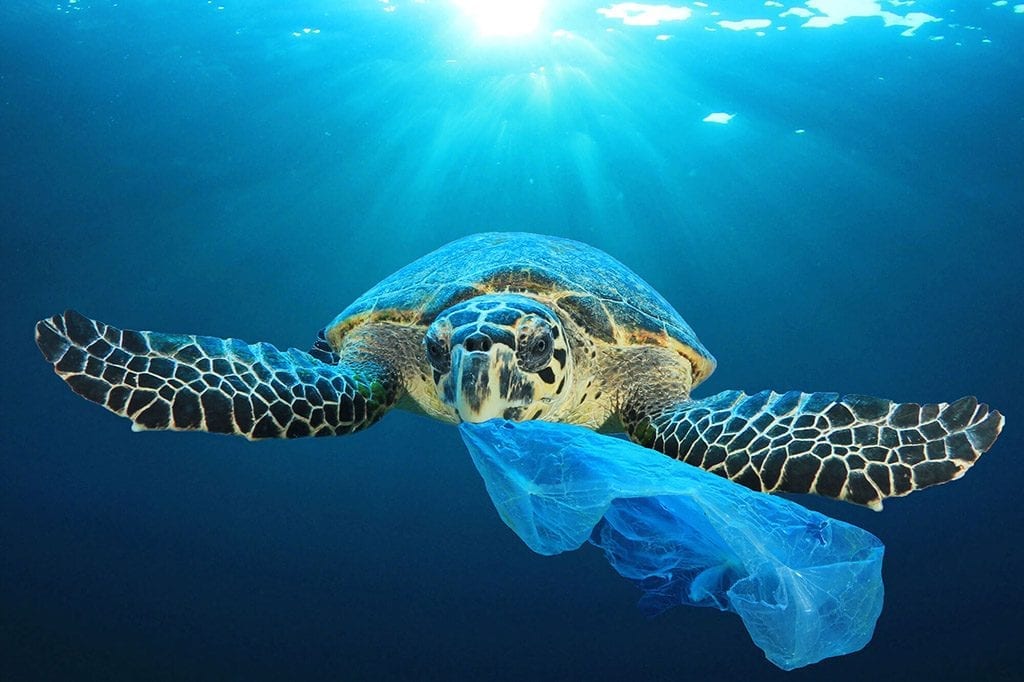
Plastic bottles and single-use grocery bags are among the most.
Both of these are made out of low-density polyethylene, which is considered a food-safe plastic, which is why it is so readily available.
Then you also have plastic straws and other plastic bags (ziplock, sandwich bags, etc.) that come in closely as well.
You may remember a recent initiative to stop using single-use straws in restaurants and fast food chains across America. It’s a start, but not really hitting the root cause of the problem.
In fact, we now have an influx of items like the alternative single-use cup with a built-in straw, which actually use more plastic than single-use straws do.
It’s a perfect example of what not to do. The solution is to start bringing your own stainless steel straws.
But then there are plastic items that you can’t get away from, like plastic containers that a lot of food comes in at the grocery store.
Packaging in general is one of the largest categories of plastics that you can find throughout landfills and the ocean, and we know it sounds backwards, but this could actually be good news.
It’s lightweight and easy to pick most of it up, meaning it’s not that difficult to recollect it and pull it from the ocean.
Plastic pollution is one of the leading reasons of the decline in marine life in recent years, and while there are still other pollution methods that need to be addressed, this is an enormous leap in the right direction.
Packaging takes the cake in almost every way, and that includes take-out containers, fast food serving containers, and throwaway cutlery.
Other plastic items that are commonly filling the ocean are discarded plastic bottle caps, plastic cushioning that comes in your Amazon delivery boxes, cigarette butts with plastic filters, and single-use plastic gloves.
And this is one of the reasons we’re so passionate about using reusable items and finding disposable gloves alternatives!
It’s impossible to say we can be a zero waste society, but reducing these frightening numbers is still an option that we can explore.
If we begin with the very worst things and the biggest numbers, our efforts can be accelerated, and ocean cleanup can continue with a high level of impact.
How Are Reusable Items Helpful for the Environment?
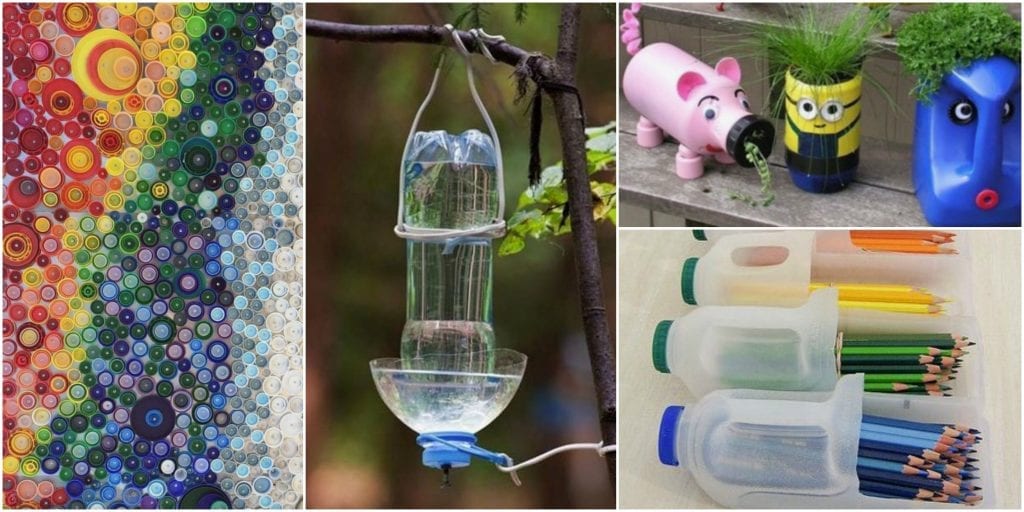
Reusable items are basically the number one way that you and I can do something to fight what’s going on.
There’s a lot of us on this planet, and collective efforts have to begin with individual solutions and actions.
Since there’s an estimated five trillion pieces of plastic in the ocean (fifteen trillion in the next six years), the first thing that comes to mind is, “Well what if we stop using plastic?”
We actually could do that, and it’s far easier than you think.
On average, over one trillion plastic bags are created and distributed across the globe each and every year. If you brought your own reusable bags, you would be helping the problem.
Not only are they more durable and can hold more groceries than standard shopping bags, but the amount of pollution that you prevent from ending up in the ocean is astounding.
If you use about eight plastic bags per week at the grocery store (average number for a one-person weekly food shopping), then you’re putting 416 bags in the ocean, or the equivalent of five pounds of plastic.
Then you get into bottles, which are a major cause for concern.
Plastic bottles are one of the biggest sources of littering and ocean plastic dumping that there is, and it’s actually immensely cheaper to switch to using recycled glass bottles instead.
Keep/reuse glass bottles, and find out how to clean them properly, and invest in a faucet attachment filtration system.
Start filling glass bottles and keeping them in the fridge, and you’re doing your part to keep plastic out of the landfill straight away.
If you drink the recommended eight glasses of water per day, strictly through water bottles, then that’s 1,460 plastic bottles that you use every year. Either that, or you could use absolutely zero by making the switch.
We are fairly powerless to change the course of what’s going on, because you and I aren’t the ones manufacturing all of these single-use disposable goods.
But the thing is, these businesses only create this level of waste because we buy it.
No business will continue to make massive amounts of something if it isn’t matching their sales, so if we can stop buying so many single-use items, the supply and demand—one of the most basic rules of economics—will swing in favor of a greener future.
You buy less, they make less, we waste less.
How Exactly Does Plastic Affect Marine Biolife?
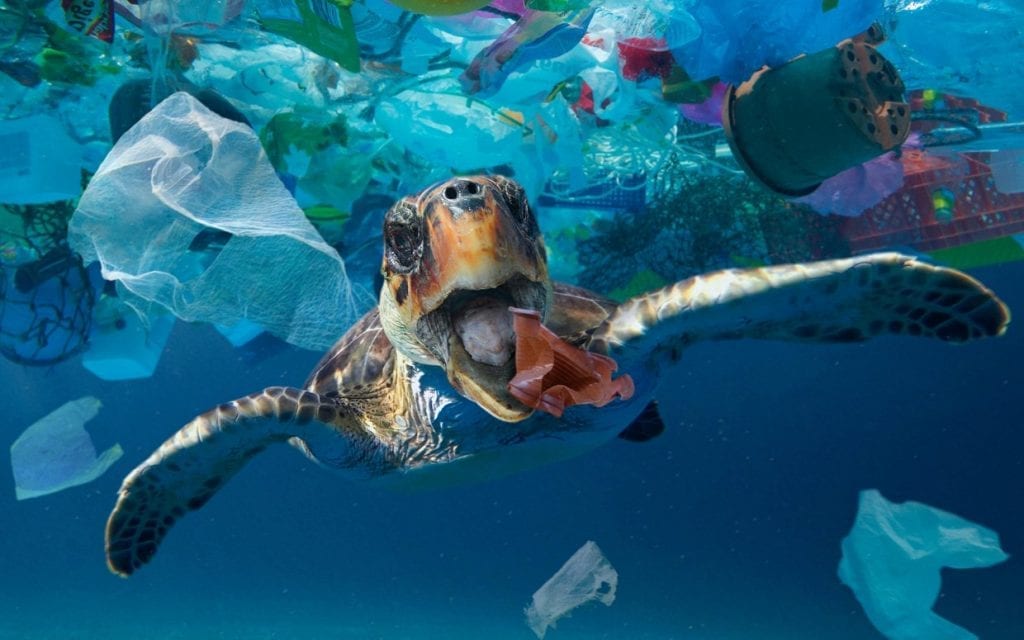
If you’re wondering how plastic actually affect each individual fish and the overall balance of marine life, this is what you’ve been dying to see.
We’re going to start with one of the most potent facts surrounding the direct impact: whales washing up on the beach, completely dead from ingesting plastic.
That’s about as grim of a picture as it needs to be.
It’s not just an isolated incident, either. Marine life is ingesting plastic and suffering the consequences.
There’s a misconception that all ocean garbage floats on top and is easily removable by skimming, but it’s simply not the case.
It is expected that up to 80% of the world’s ocean garbage that affects marine life is completely made of or primarily made of plastic, and that it’s affecting over 700 species of fish and other aquatic life.
That’s a pretty big deal, especially when you consider the fact that some of those species might rely on one another in the food chain. It’s like there’s nothing that’s actually helping marine life out there.
There is countless photography showing dolphins carrying plastic bags on their fins, fish with rubber bands around their bodies, and even one of a seahorse mistakenly carrying a Q-tip around because it believed that it was food.
This is only if you get past the before and after photos showing a ten or twenty year time lapse in the cleanliness of specific spots around the world, like different rivers and beaches. Marine plant life is dying off, and water is becoming completely stripped of oxygen for fish.
For those spots that aren’t near the shore, fish are able to congregate near coral reefs in the middle of the ocean for some sense of semblance and safety, but even those are at risk.
A study found that coral has become 89% more likely to contain dangerous pathogens if it has come into contact with plastic.
Plastic bleeds into the water over time.
The problem with plastic that sits on the top of the water is that ultraviolet rays from the sun are doing what they can to dissolve the main polymer compounds, and sending those to float freely through the water, which ends up in fish and affects the growth of pretty much everything.
What is TheOceanCleanUp?
TheOceanCleanUp is the single strongest force against ocean waste in human history.
It has taken far too long for the government to make a decision on ocean waste, and we aren’t waiting around for them to devise an action plan any longer.
TheOceanCleanUp is a publically-funded, donation-driven effort to skim the oceans and restore the natural order of things by removing as much human intervention as possible.
They target garbage patches (water landfills) and the way that their trash will circulate the most imperative marine life hubs on the planet, potentially killing an unspecified quantity of marine life.
They are built out of engineers, scientists, researchers and dedicated personnel that can’t stand by and watch the world erode any longer.
Since 2013, TheOceanCleanUp has been addressing the full-scale problem that all this plastic pollution has on our future: economical disaster, human and marine life health, and the crippling damage that’s being done to our environment as a whole.
What is the Great Pacific Garbage Patch?
It’s also known as the Pacific Trash Vortex, and it’s one of the worst concentrations of plastic that we have on earth.
Somewhere between California and Hawaii, plastic waste builds and floats on top of the water, getting trapped in a specific series of ocean currents.
This keeps most of the garbage and debris close together, but the issue is that the Great Pacific Garbage Patch is growing constantly.
Different estimations come out at different times, and it is incredibly hard to track or have an accurate number on.
In this instance, you can only count what you see, so we don’t know about the pieces of plastic that have been dragged underwater by the undertow, or those that were simply too heavy and sank.
Estimates range from the equivalent size of the state of Texas, to the entire nation of Russia—a different of nearly 2000% in size. Yes, 2000%.
It’s impossible to measure properly, but it’s not the only garbage patch that we have to deal with.
In total, there are five major garbage patches, known across the globe as ocean gyres.
Imagine that you have five different patches of garbage that measure the size of Russia.
That would be well over 28 million square miles, which is absolutely insane to think of, primarily because we are the ones who created it in the first place.
How Can We Help With Cleanup of Our Oceans?
There’s this damaging misconception that we, as global citizens, are powerless to change the course of mankind and the catastrophic damage that we’re dealing on the environment.
It is a misconception. While corporate superpowers have their own (very large) hand to play in this, on the individual level, we can make a dramatic change for the better.

